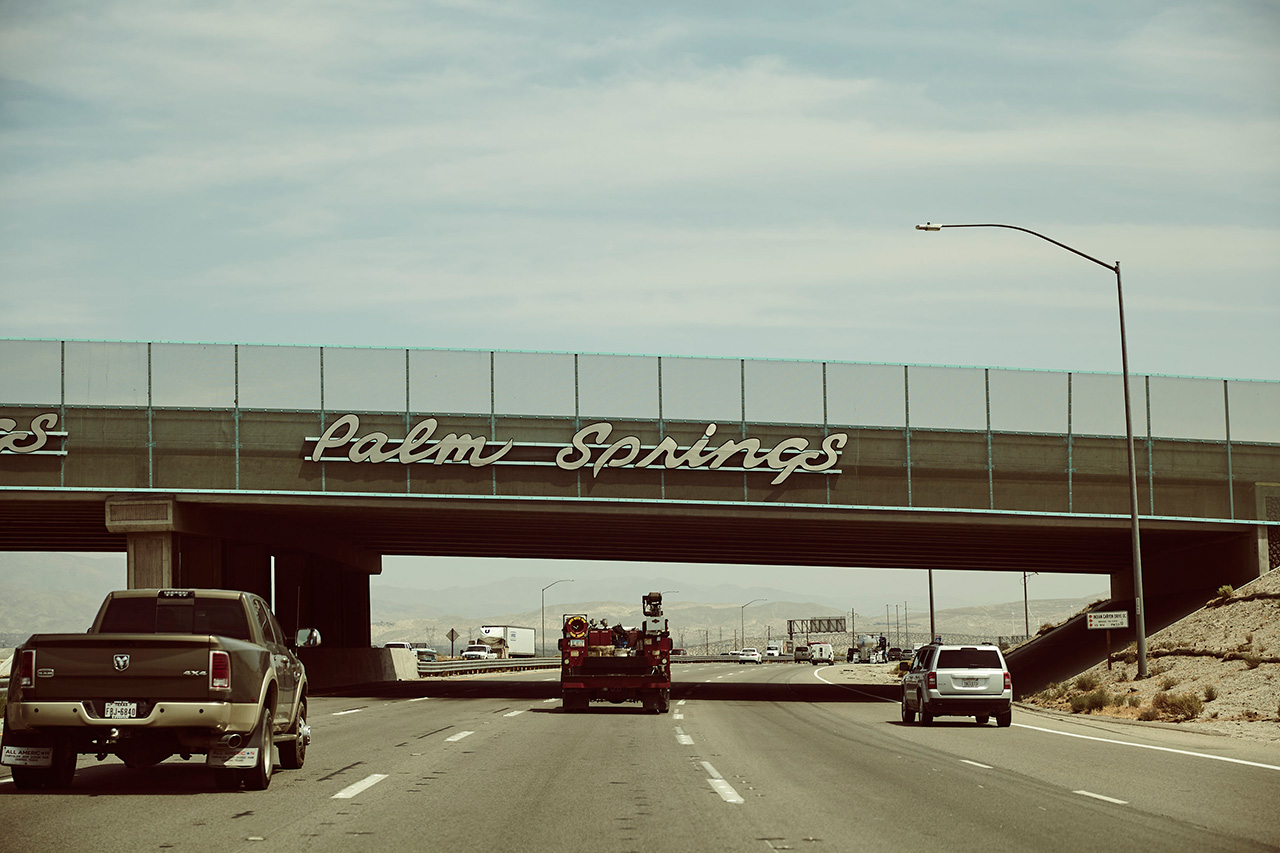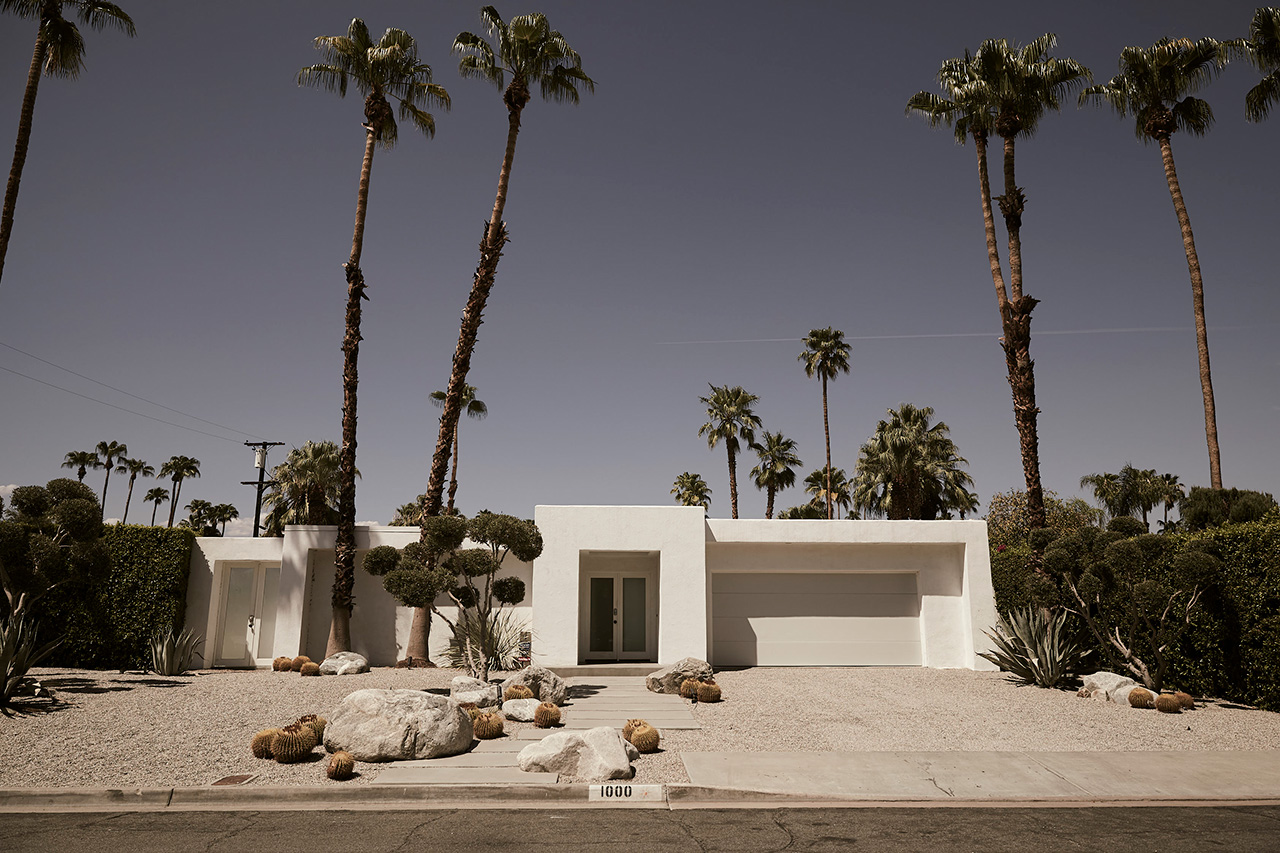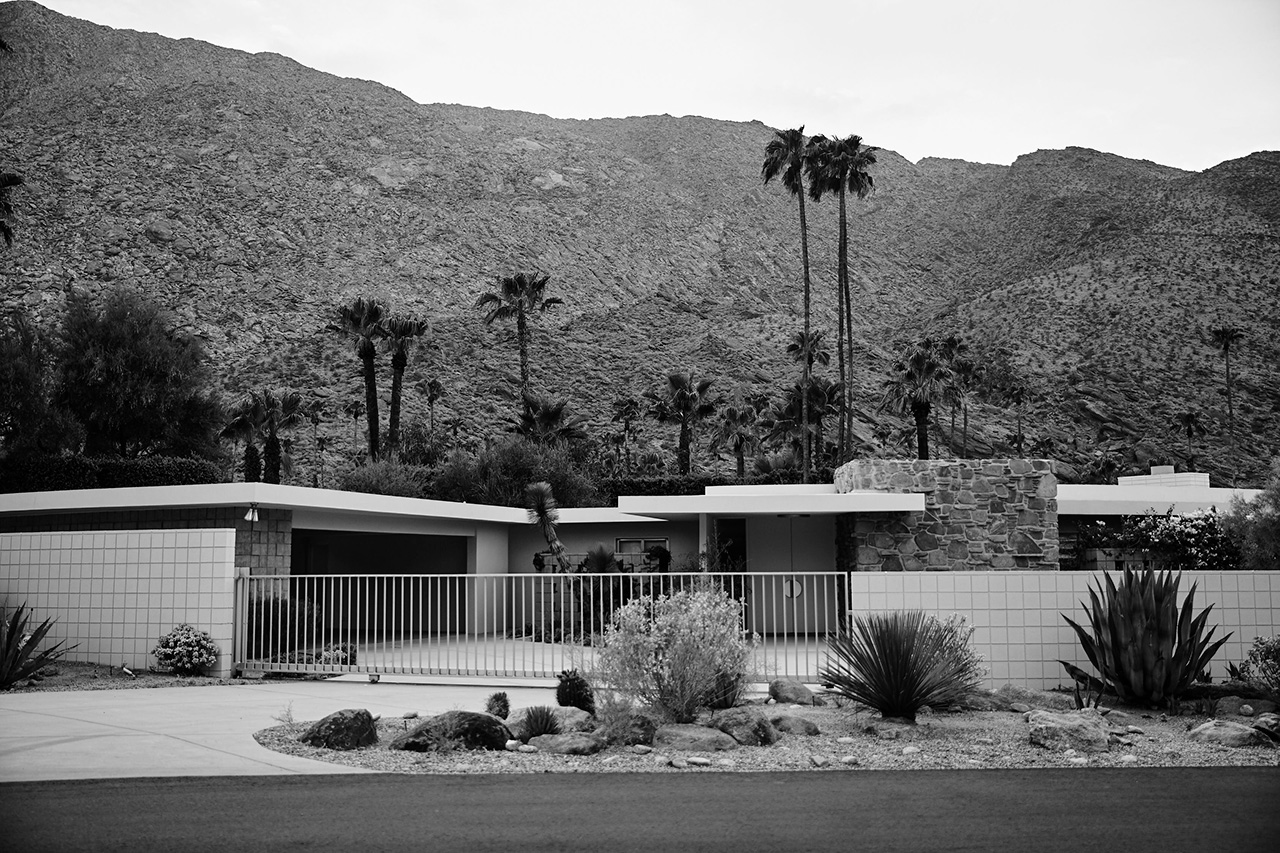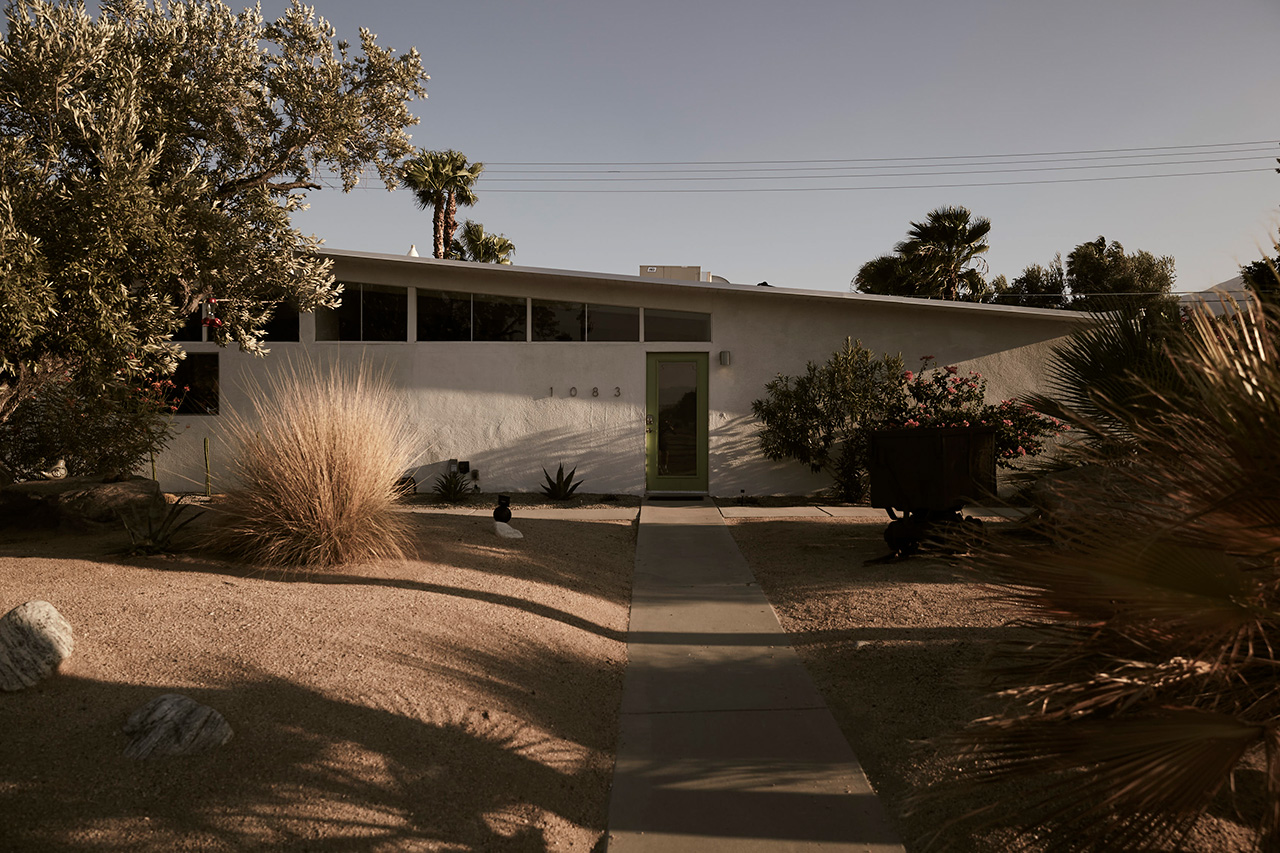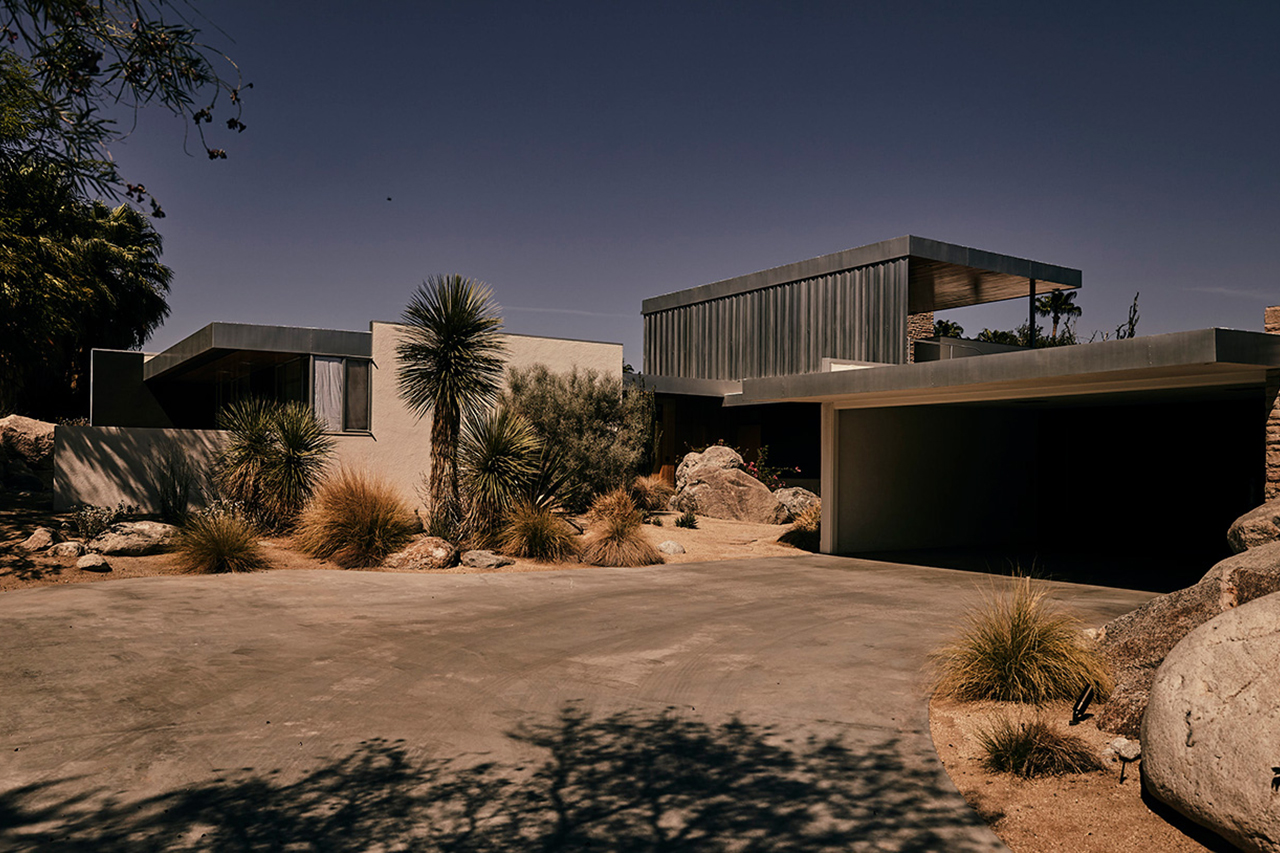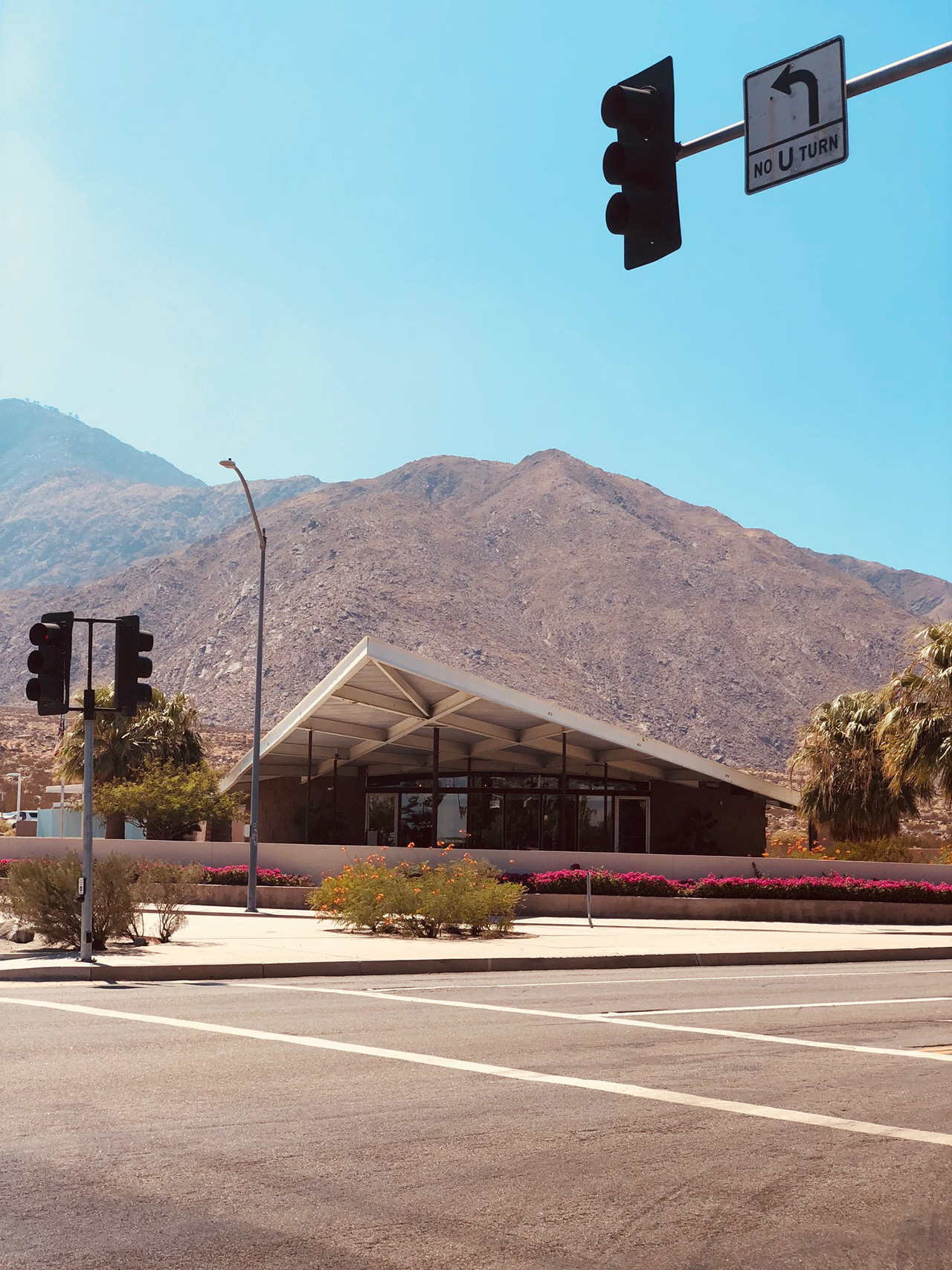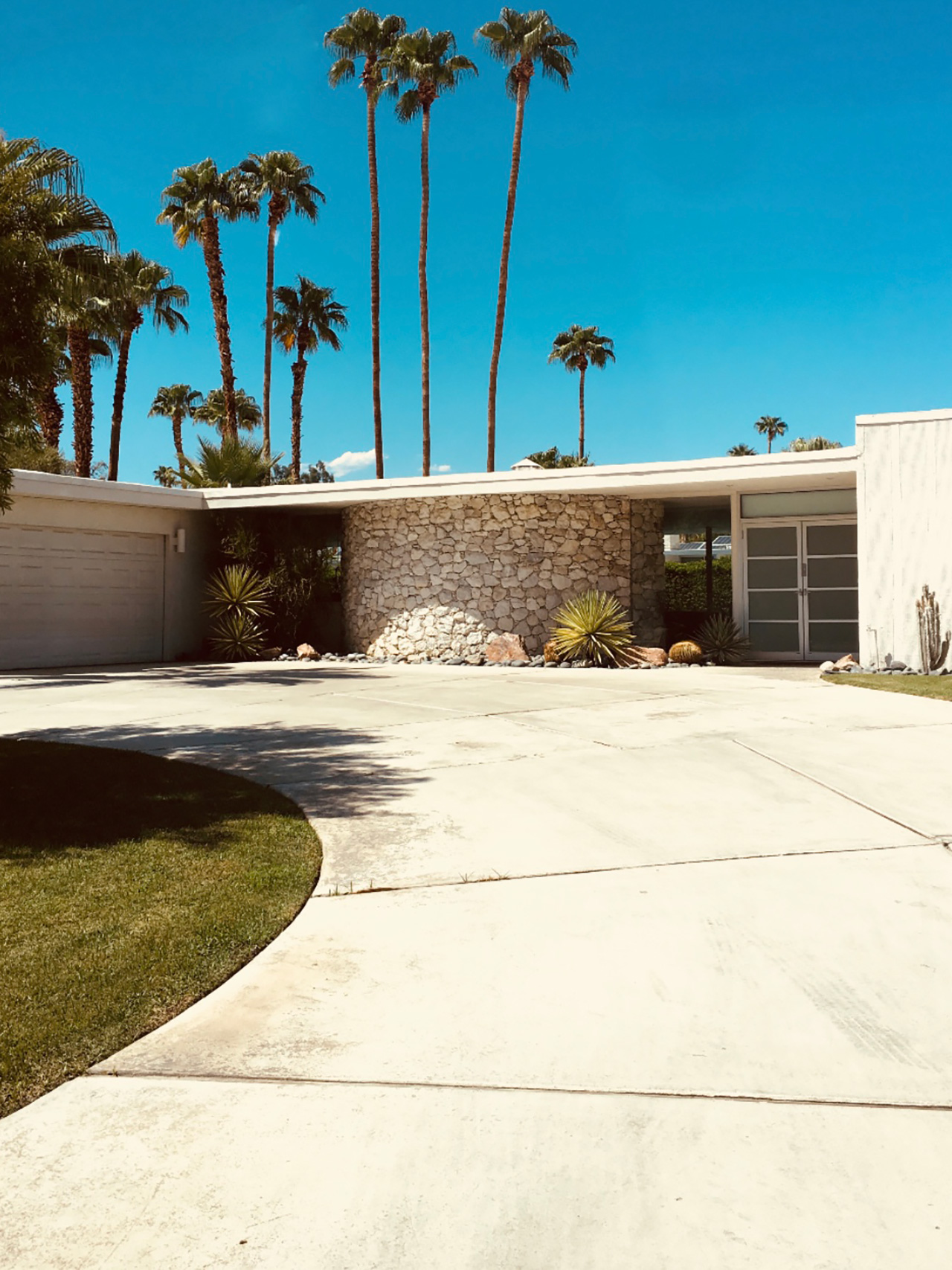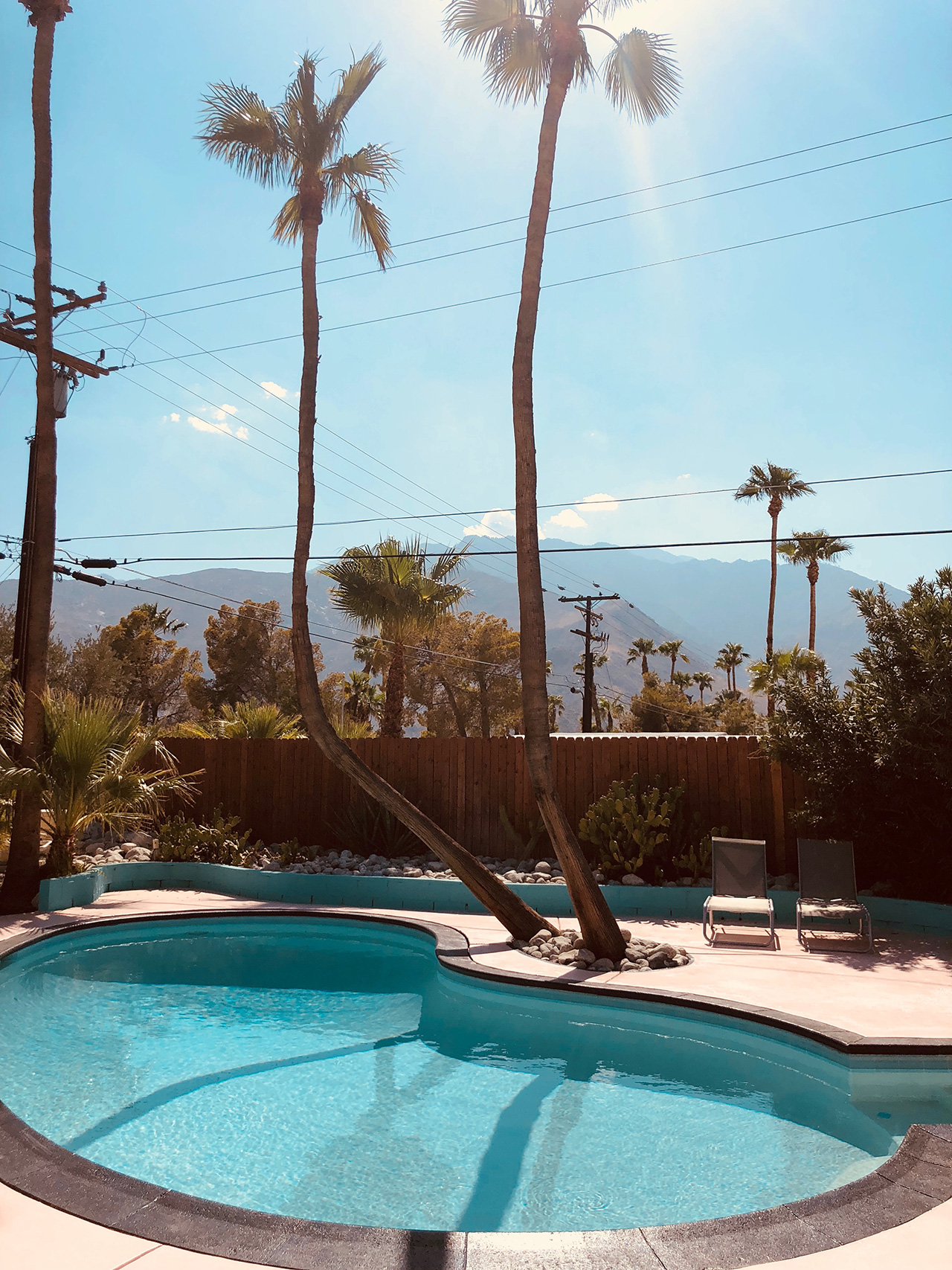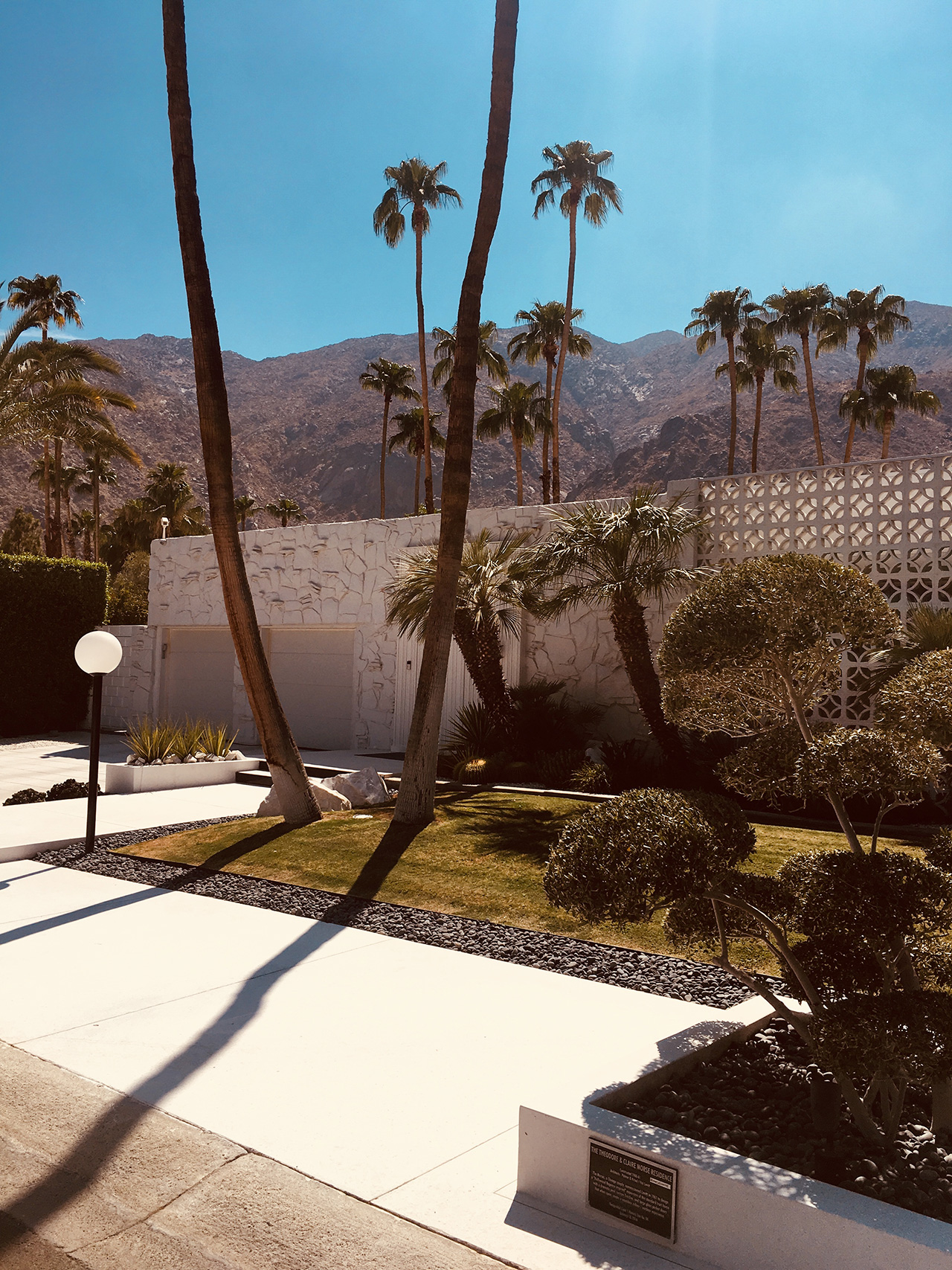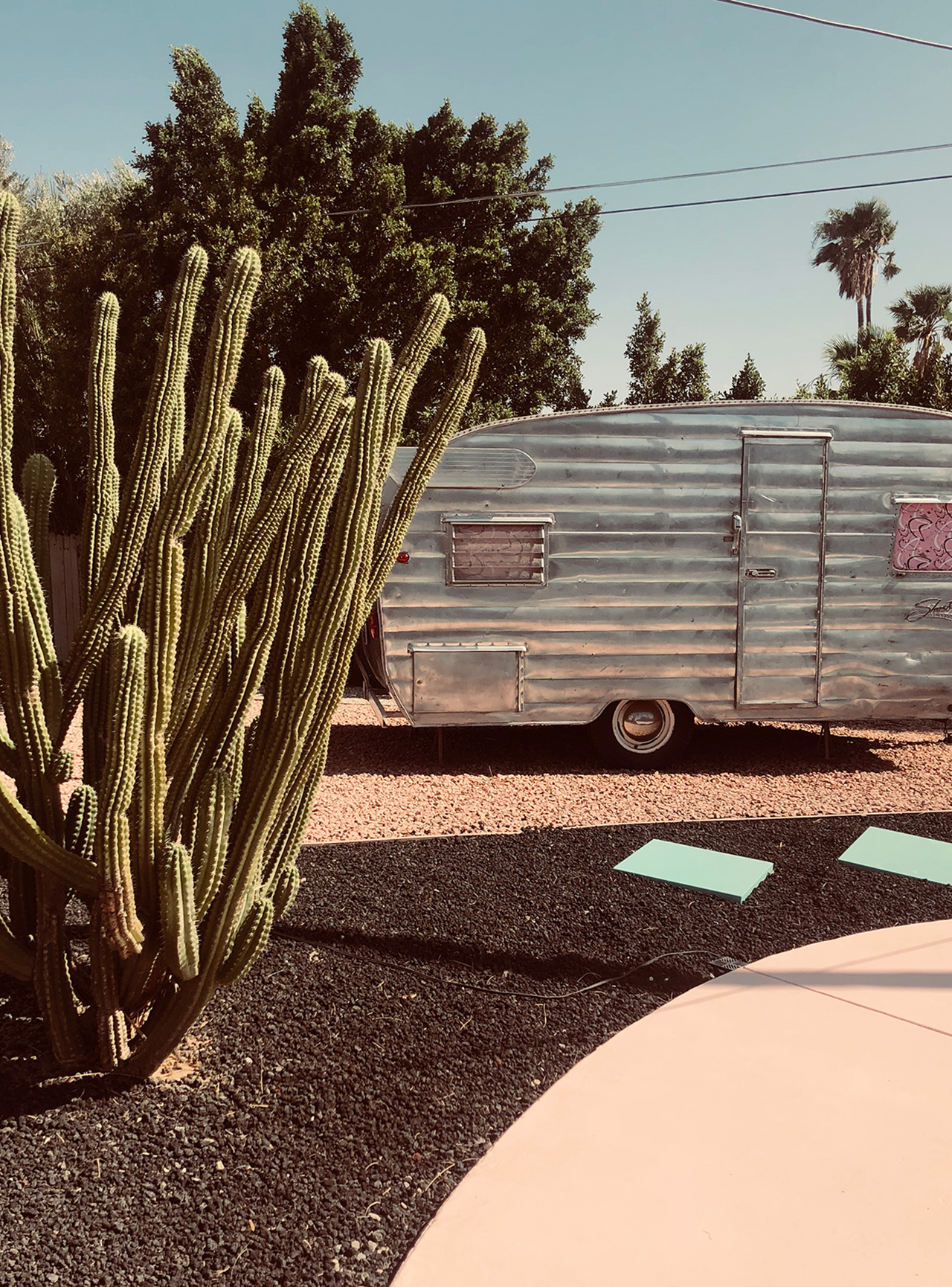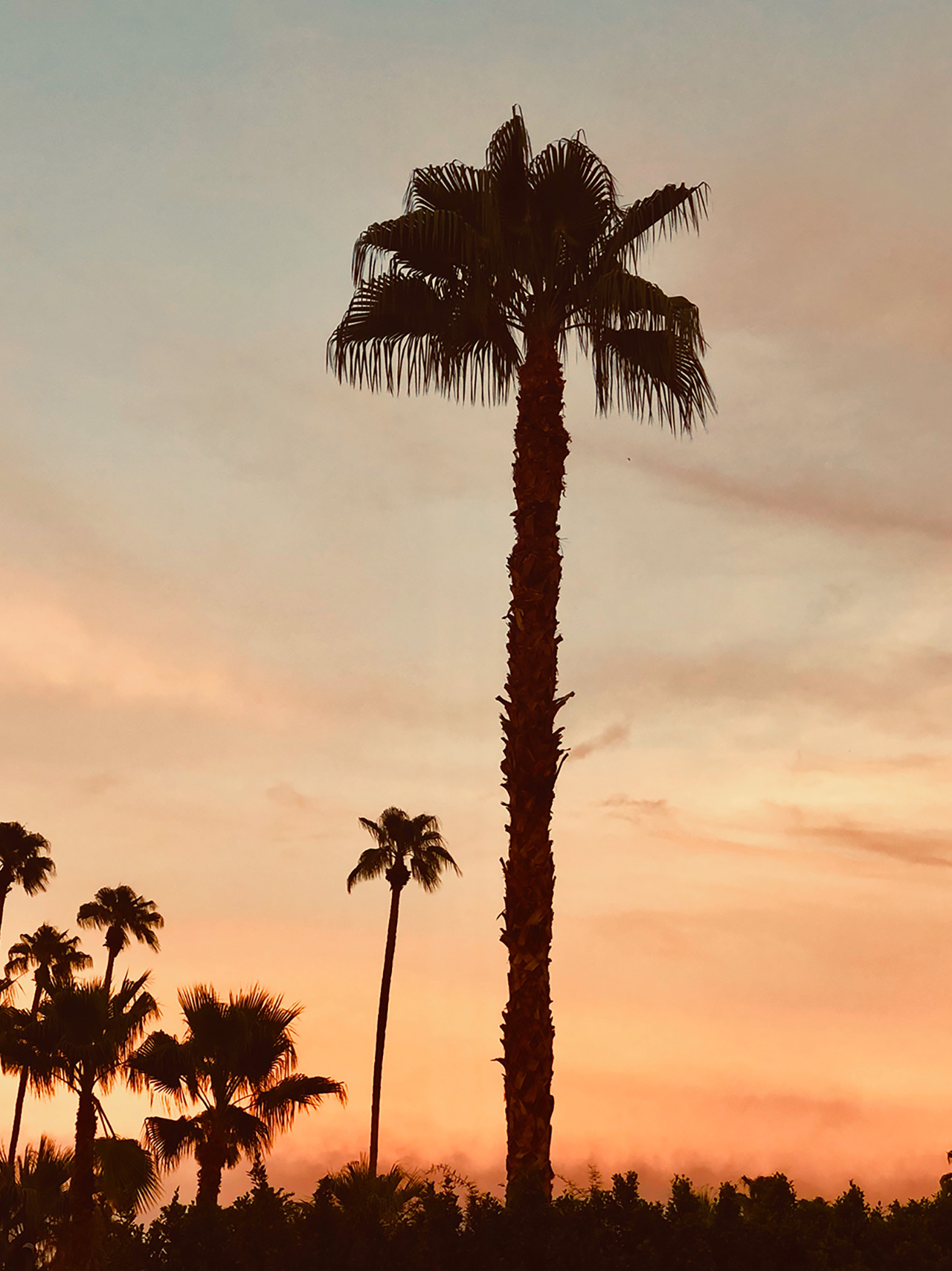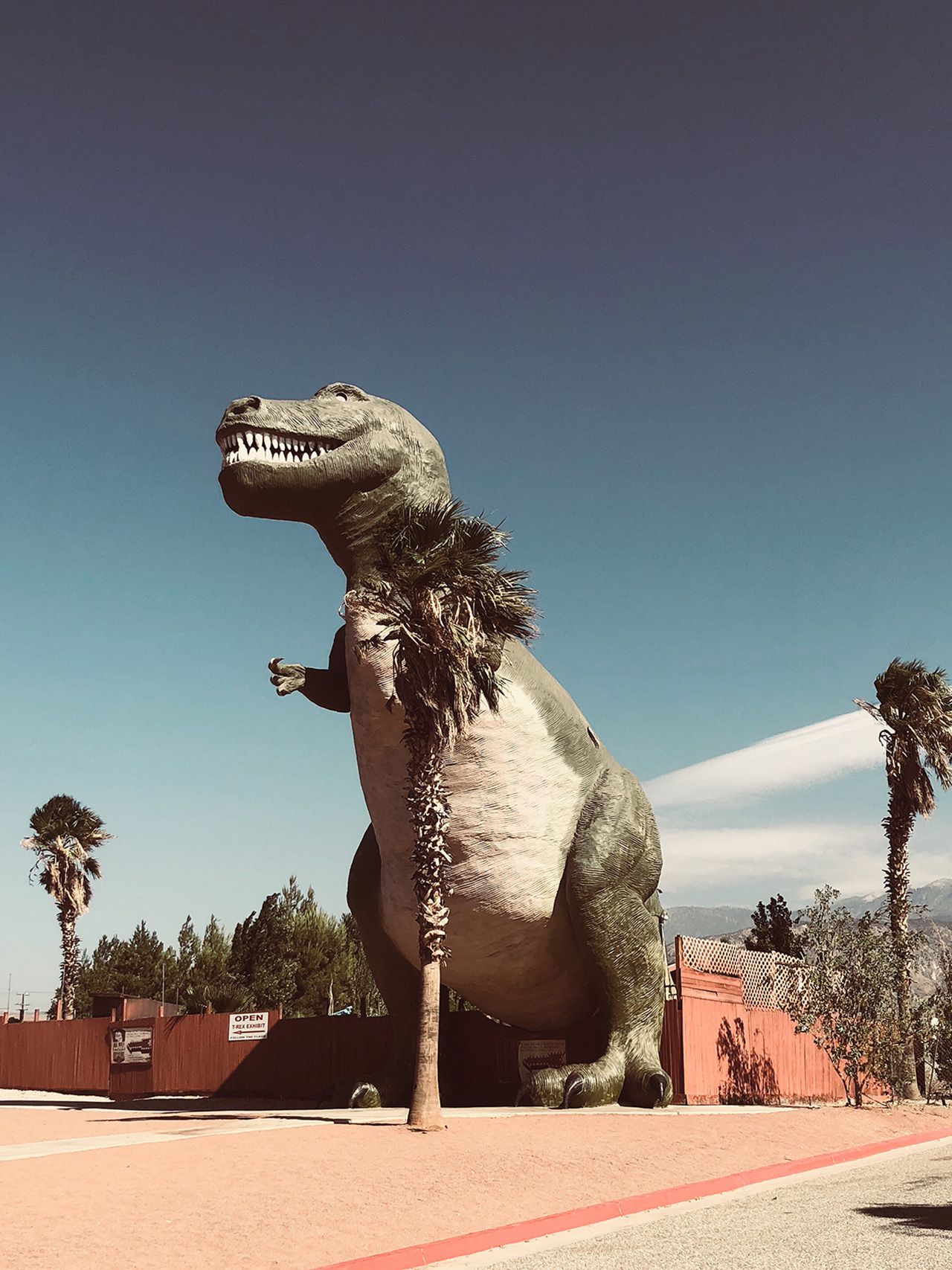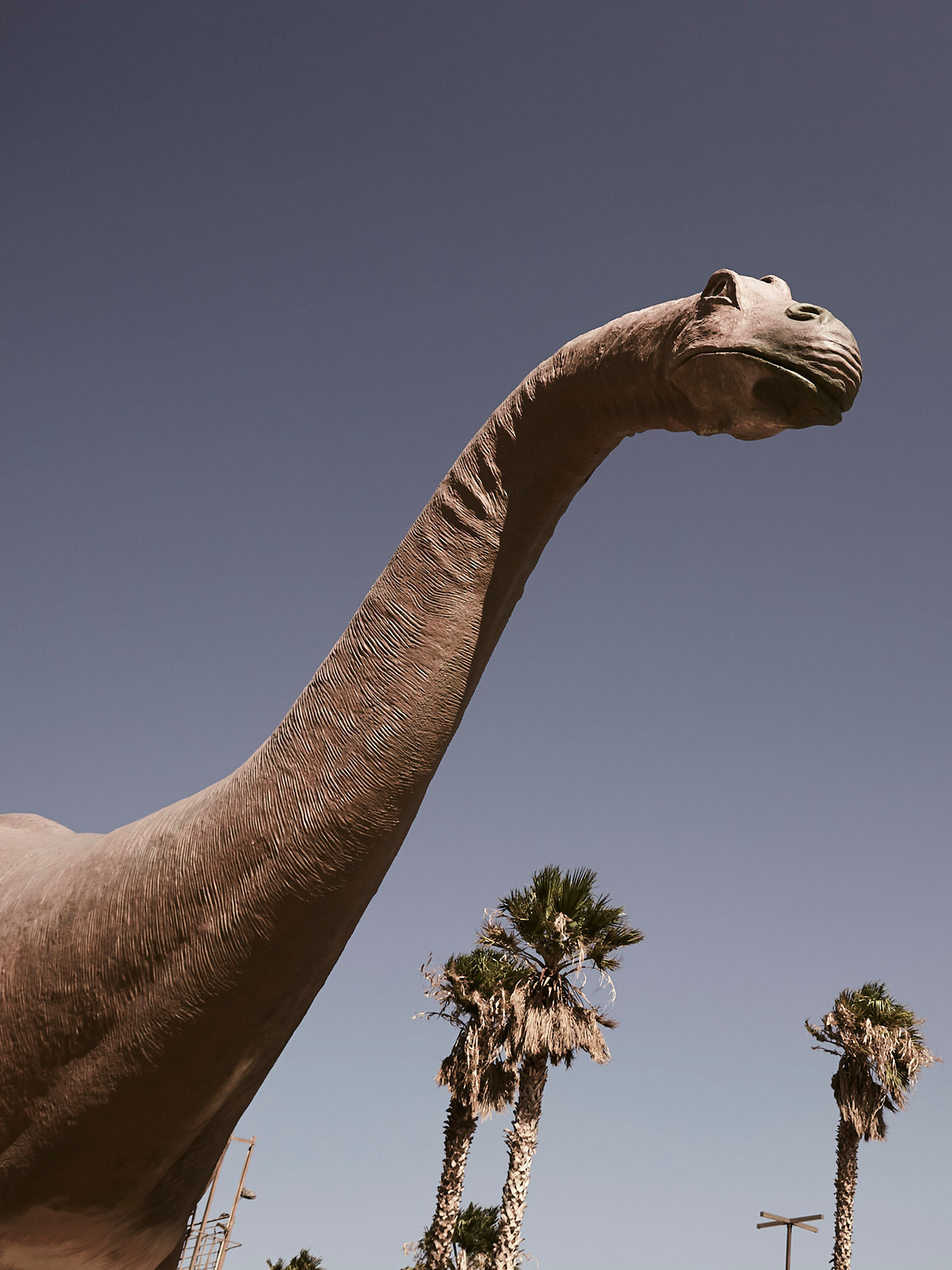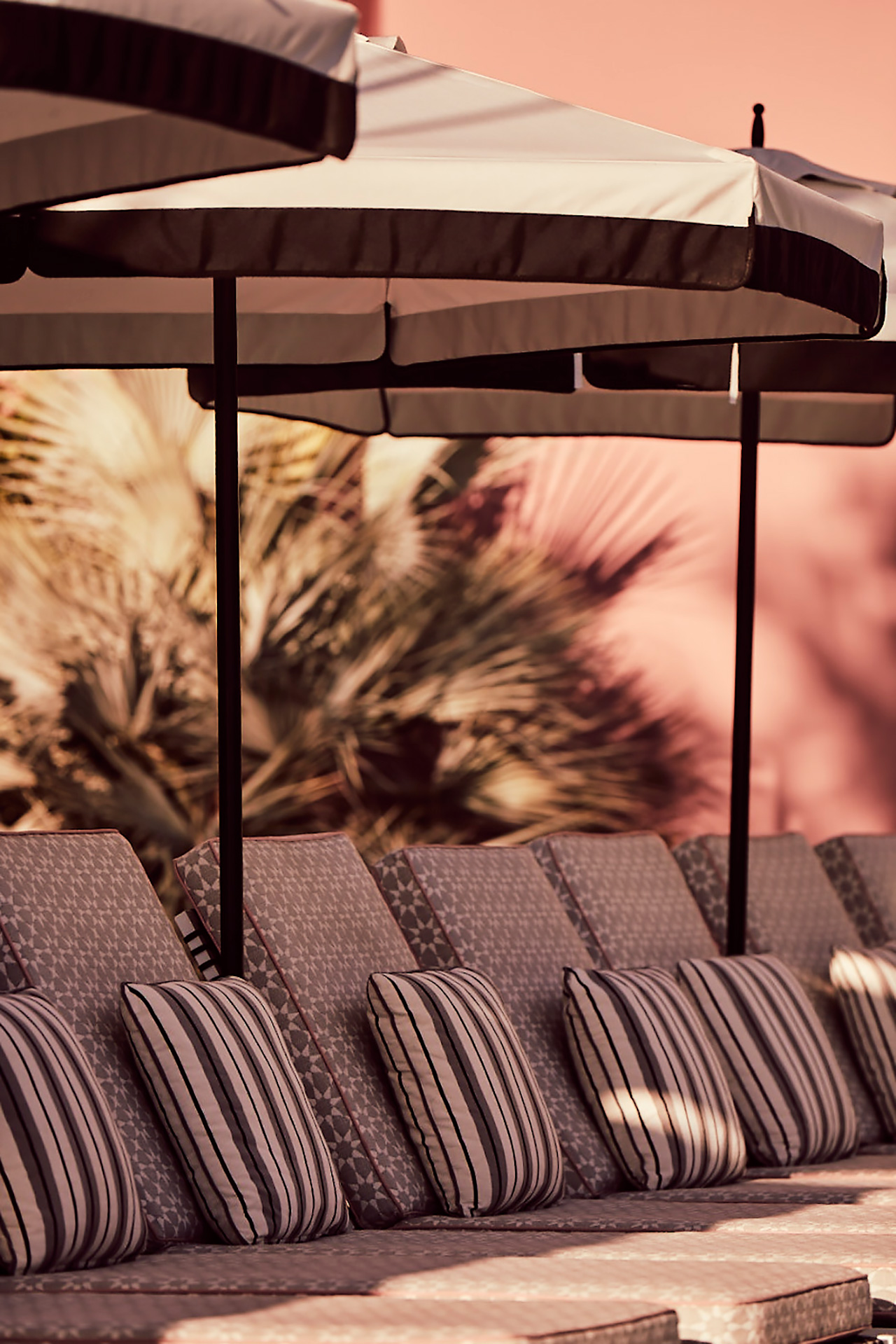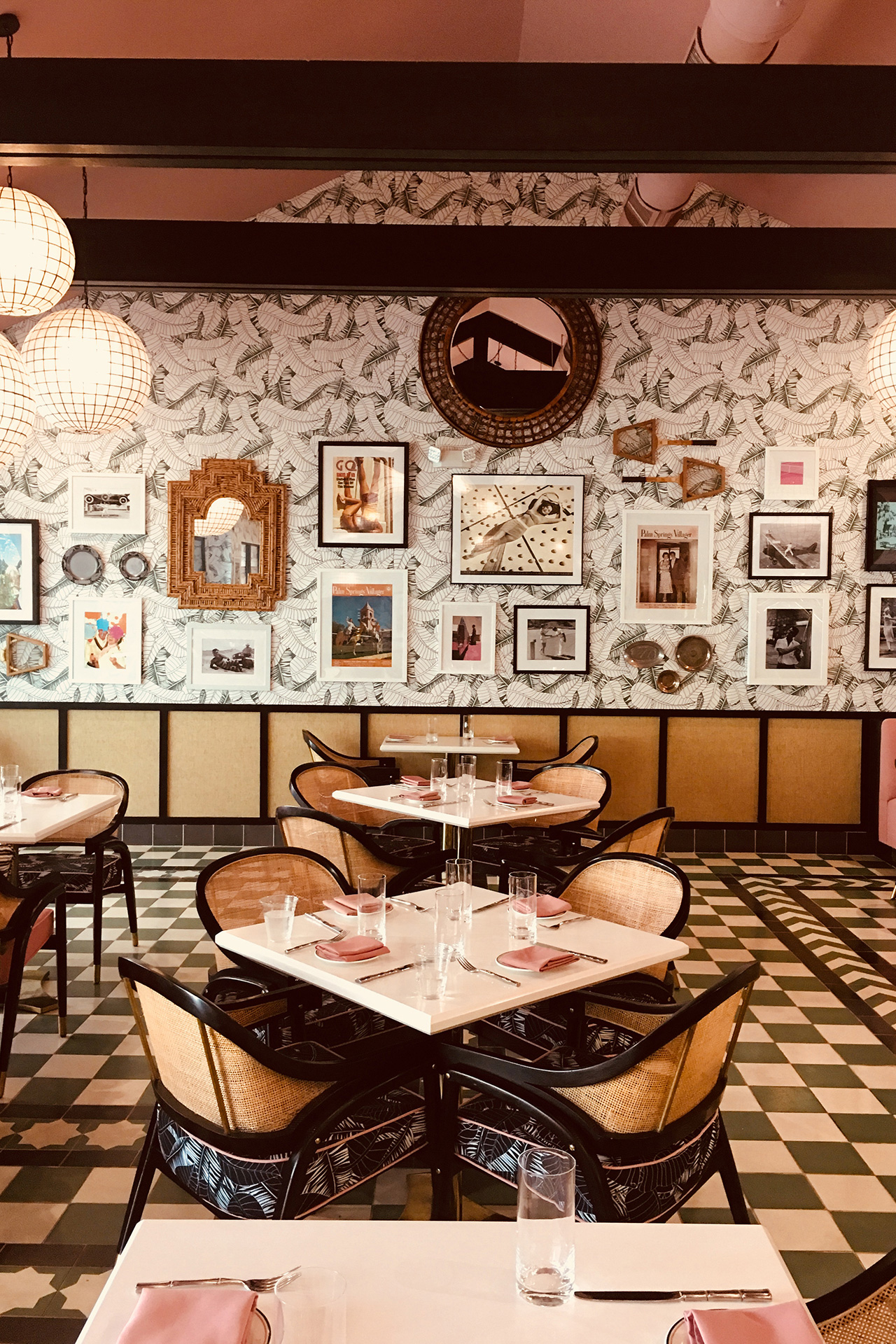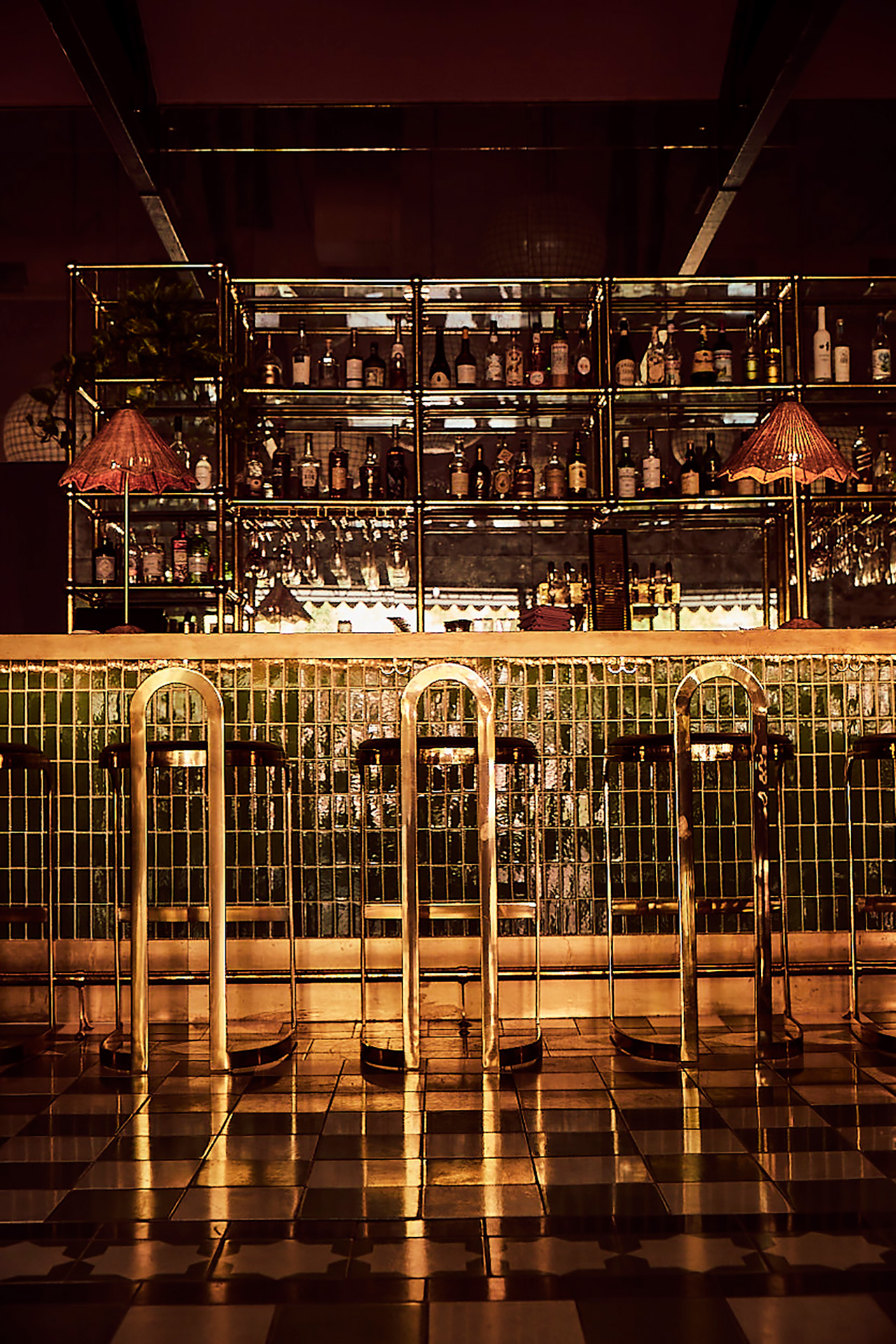News feed
Though it has long been a desert idyll for those seeking rest and relaxation, there’s a tension that exists at the heart of Palm Springs. A tension between the petrified splendour of the desert and the utilitarian rigour of the resort town’s singular architecture; between the worship and fearing of the sun. Less visible, though no less potent, is the frisson between competing desires of hedonism and virtue, display and discretion.
The burgeoning entertainment industries of early 20th century Los Angeles played a large part in the mythmaking of the Greater Palm Springs area, a one-time stagecoach stop named Se-Khi, or ‘Boiling Water’, by the native Cahuilla people for its restorative mineral hot springs. Many of the brightest talents in Hollywood would travel east of the city in search of respite from the scrutiny of the studio system. Marilyn Monroe was discovered here. Greta Garbo would visit to indulge in her usual bouts of solitude. Dietrich, Davis, Hepburn (Katharine, that is) — all would find their way to the desert at a time when Hollywood studios enforced on their stars a rule that dictated that, during production, one could never stray more than two hours from their lots. It was only once those stars passed through the San Jacinto Mountains that they could breathe again. In 1947, when Frank Sinatra charged the local architect E. Stewart Williams with breaking new ground on a home in Palm Springs, he did so quite literally. Williams devised a residence suited to Sinatra’s plot in the desert. Long, clean lines mirrored those of the horizon. New and non-traditional materials produced during the war effort emulated the lunar landscape of the desert floor. Once completed, the style — ‘Desert Modern’, as it came to be known, along with the ‘Palm Springs School’ — set the standard for post-war Hollywood glamour, not only for the entertaining class, but an emerging middle-class with the means to buy a second property at which to vacation.
“Palm Springs became a laboratory for experimenting with these new products and technologies,” says Kurt Cyr, the founder of Palm Springs Mod Squad. “Because Palm Springs was a seasonal resort, people were more willing to experiment with daring designs. They didn’t have to live in these houses year-round so they were more willing to try new ideas. We are the fortunate inheritors of their daring architectural experiments.”
The style itself has four distinct hallmarks: simple lines and cantilevered rooflines provide ample shade; clerestory-style windows extend to the ceiling to maximise exposure to the brilliant sky without sacrificing privacy; brise-soleil — decorative screens wrought from tinted concrete, metal or wood used to deflect sunlight and reduce heat gain while also shielding interiors from prying eyes; and patterned brick shadow-block walls embossed with graphics double as a canvas on which the desert’s shimmering light can play. Where architectural expression is often dictated by prohibitive building regulations and financial restrictions, Desert Modernism rewrote the rules in that regard, too. There are examples of modernism in Palm Springs that predate 1940, but it wasn’t until after the war, during a time of affluence and expansion, that mid-century modern became de rigueur. As early as 1932, however, Albert Frey, another of the school’s most influential architects, wrote to his mentor, the French architect and urban planner Le Corbusier: “Fortunately our efforts are not hindered by building codes regulating size, type or materials. The result of this freedom is that parcels of land look like laboratories of architectural and materials research. Fortunately, also one only expects a house to last 30 years. They are consequently not built to last.”
The fact that these structures have survived is what makes Palm Springs even more significant in the history of modern architecture. It’s serendipitous, Cyr contends, that through a cocktail of neglect and indifference the community’s singular style has successfully withstood the ages. From the late 1970s to the mid-’90s, after the Hollywood studio system came to an end and stars began to travel abroad, Palm Springs shuddered to a standstill. Businesses closed, houses deteriorated and development — social, financial, commercial — pivoted away from Palm Springs to nearby gated communities in open desert valleys able to expand indefinitely.
“These were challenging years for Palm Springs,” recalls Mark Davis, a board member and treasurer at Modernism Week, a design advocacy organisation established 14 years ago that regularly draws six-figure crowds to Palm Springs for hundreds of events during its 11-day program. “Because of the decline, structures were basically saved by neglect. It was easier for developers to move ‘down valley’, further east of Palm Springs, where ample, empty and cheap desert land was available, to build huge golf communities and shopping centres.” It wasn’t until 1995 that advocacy to save Palm Springs’s trove of mid-century modern structures started in earnest when the Tramway Gas Station, designed by Frey and Robson Chambers in 1965 with desert rose-tinted brick and a hyperbolic paraboloid roof, was threatened with demolition. The battle to save what is now the town visitor’s centre coincided with the complete restoration of Richard Neutra’s Kaufmann House by banker Brent Harris and his wife Beth Edwards Harris, an architectural historian. At the time of their purchase of the house in 1992, it was primed for demolition after languishing neglected for years. Stripping away some 2000 square feet of additions and restoring the property to its original structure for a princely sum saw the home – famous for featuring in Poolside Gossip by the photographer Slim Aarons – reintroduced to the world to great acclaim.
The salvation of both structures galvanised a movement to preserve those buildings which not only defined an era, but continue to shape Palm Springs and modernist design today. “[Kaufmann House] is considered one of the most iconic and respected modern homes anywhere in the world and placed Palm Springs squarely on the map for mid-century modern architecture,” says Davis. Prior to the advent of Desert Modern, Palm Springs was dominated by Spanish-influenced styles such as Spanish Eclectic and Spanish Colonial Revival, Desert Spanish and Hacienda. “This style of architecture is still very well represented, respected and has been preserved as an important piece of the city’s history,” says Davis. Tiki-style Hawaiian architecture thrived in the 1960s after Hawaii joined the Union in 1959. Pueblo-tinged modernism entered the conversation thereafter, as did Greco-Roman influences following the first-ever broadcast of the Olympics, held in Rome in 1960.
Today, the scope of international styles has broadened further still as the city embraces its legacy as a place of cultural cross-section. Palm Springs remains a destination for many embarking on a pilgrimage of their own, design or otherwise. Young architects such as Sean Lockyer of LA-based Studio AR&D embrace the more rigorous building codes that are now required of local practitioners. Cyr says Lockyer has developed “a robust, muscular style that references our past without mimicry”. Liberal use of organic and metallic cladding such as Cor-Ten® steel, stone and stucco is seen in projects such as the Desert Palisades Guardhouse, completed this year and considered by many to represent a new paradigm for Desert Modern architecture with an honesty to its sense of time, place and material. “I believe he is continuing the tradition of creating an architectural legacy that Palm Springs can be proud of and will celebrate,” says Cyr.
Although architectural styles have changed, the Palm Springs valley’s reputation as a wellspring of R&R does not. At The Sands Hotel and Spa, modernist influences commingle with vibrant design elements that take their cues from the riads of Morocco by way of I Dream of Jeannie (this is California, after all). Ornate archways rendered in desert hues frame postcard vistas of the hotel grounds, a plethora of maximalist prints providing a rich contrast to its pared-back Desert Modernism. Atop the surrounding hills, the Ritz-Carlton Spa, Rancho Mirage embraces its surroundings in both design and treatment menu, with the influence of desert wildflowers and the area’s monoliths notable in the offering. The result is an honest expression of this extraordinary landscape.
THIS ARTICLE FIRST APPEARED IN THE SEPTEMBER EDITION OF GRAZIA AUSTRALIA. SUBSCRIBE HERE TO RECEIVE TWO PRINT EDITIONS PER YEAR FOR $20AUD
GRAZIA’S FASHION TEAM travelled to Greater Palm Springs as a guest of the Greater Palm Springs Visitors Bureau; accommodation and experiences were provided courtesy of the The Sands Hotel and Spa and the Ritz-Carlton Spa, Rancho Mirage.
Tile and cover image: Supplied






